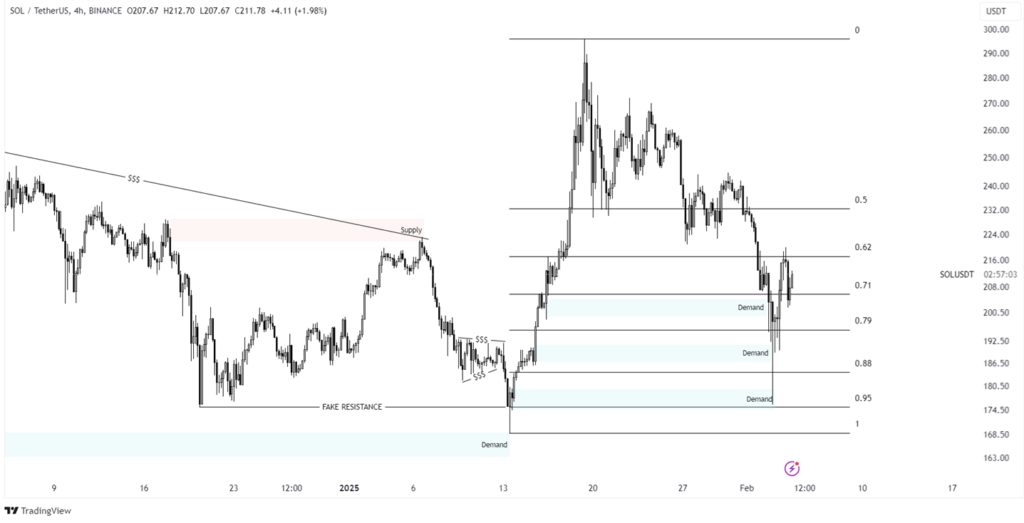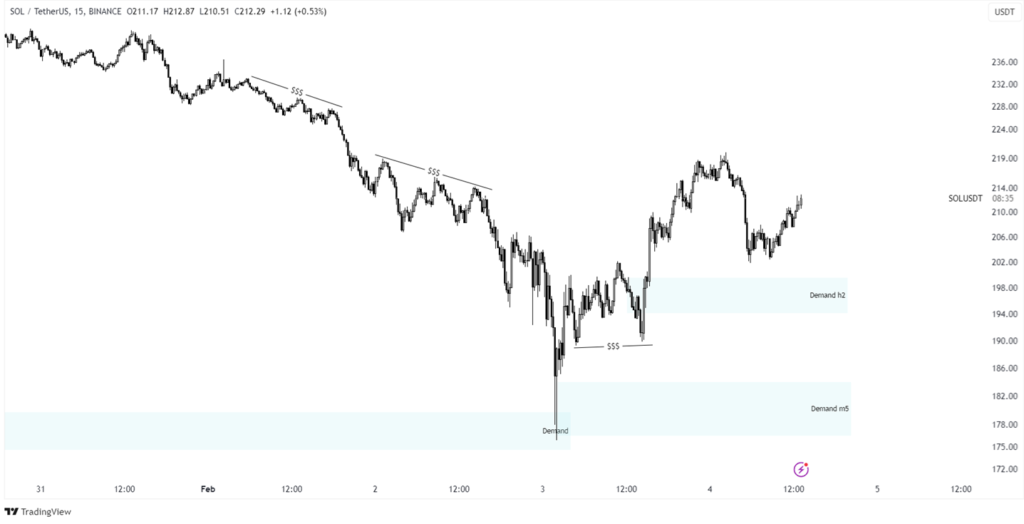- Solana has reacted to a key demand zone, but previous levels were broken—what’s next?
- Two potential buy zones identified—one is safer but harder to reach, the other riskier but more likely
- Liquidity still sits above, making an upside move possible if demand holds
In our January 29 analysis, we discussed how Solana (SOL) could drop further before bouncing back, following the typical impulse-retracement cycle and Fibonacci levels.

Fast forward to today, and that prediction played out—but not exactly as expected.
Solana’s Latest Move: Demand Zones in Play
We had marked two potential demand zones where price could react, yet both were broken.

Now, SOL has reached an extreme demand zone and bounced off a previously tested zone that had already absorbed liquidity from the left.
M15 Timeframe
At this point, I’m leaning more towards buying rather than selling, with my focus on two key demand levels:

- The lower demand – Harder to reach but offers a safer entry since there’s no liquidity left to grab below.
- The upper demand – More likely to be hit, but riskier because liquidity still sits beneath it.
What’s Next for SOL?
The ideal scenario? I’d love to see SOL leave the liquidity resting above intact so that, if it returns to one of these demand zones, we can target those highs as our next objective.
That said, nothing is 100% certain. The market can do whatever it wants, whenever it wants. These are just potential setups, not guaranteed outcomes.
Final Thoughts
Solana’s price action is setting up for an interesting move. Will buyers step in at these demand levels? Or will we see another breakdown? Either way, staying patient and letting price come to you is key.
What’s your game plan for Solana?
Disclaimer: The information provided in this article is for informational and educational purposes only and does not constitute financial, investment, or trading advice. Any actions you take based on the information provided are solely at your own risk. We are not responsible for any financial losses, damages, or consequences resulting from your use of this content. Always conduct your own research and consult a qualified financial advisor before making any investment decisions. Read more






